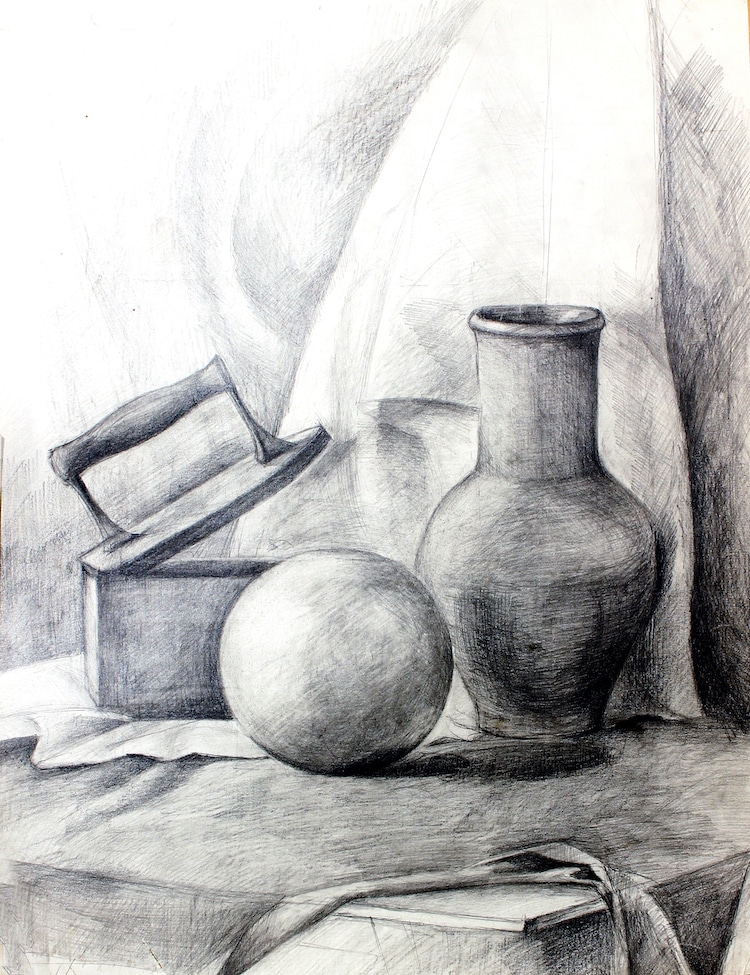
Stock Photos from Photographee.eu/Shutterstock
Still life is an iconic subject in art history. For as long as people have been creating visual work, there has been a desire to record the things that we own. Through drawing and painting, these pieces give us viewers some insight into the lives of others. As artists they've got another benefit—by drawing from direct observation, it allows us to hone our skills to make us better at our craft.
What is a still life?
A still life focuses on a group of objects that are inanimate and never move throughout the course of your drawing. Traditionally, they include organic objects like pieces of fruit that’s paired with household items like glassware and a textile.

Stock Photos from Refat/Shutterstock
Still life, particularly still life painting, has a rich place in art history. (To learn about its past—and how artists have kept it alive over thousands of years—check out our comprehensive guide to the history of still lifes.) Although the fruit and glassware are a timeless combination, contemporary still life drawings can include anything you like. Some of the most interesting pieces highlight unconventional objects with interesting details that will intrigue your viewer. It’ll probably make these pieces more fun to draw, too.
Why make still life drawings?
Still lifes will make you overall better at drawing. They are a great way to practice creating shapes and building three-dimensional forms through shading techniques of realistic lighting. You have to use many different skills when you’re working on this sort of drawing.

Stock Photos from Hatalskaya/Shutterstock
Observation is one of the most important skills that is exercised in still life drawings. In the course of putting pencil to paper, you have to make a ton of tiny considerations and decide how those translate into your work. You’ll have to decide, for instance, object relativity: how big is an object compared to the one standing in front of it, behind it, or next to it? This will require you to make some elements larger or smaller as well as employ overlapping to make it appear that things fit comfortably (and believably) into one space.
You can make your still life more or less complicated in order to build your skills. Using fabric, for instance, will give you practice in drawing the wrinkles and folds of textiles. Likewise, clear glass and shiny objects produce reflections of the things around them. In doing this, you’ll have to observe the reflected shapes and practice bending them so that they follow the form of the object they are displayed upon.
When you’re first learning to draw, you’ll probably want to opt for something that’s simple like a piece of fruit and non-reflective household items. As your skills grow, so should the complexity of your arrangements. Don’t forget that part of the joy of drawing is challenging yourself to sketch bigger and better things.






















































































